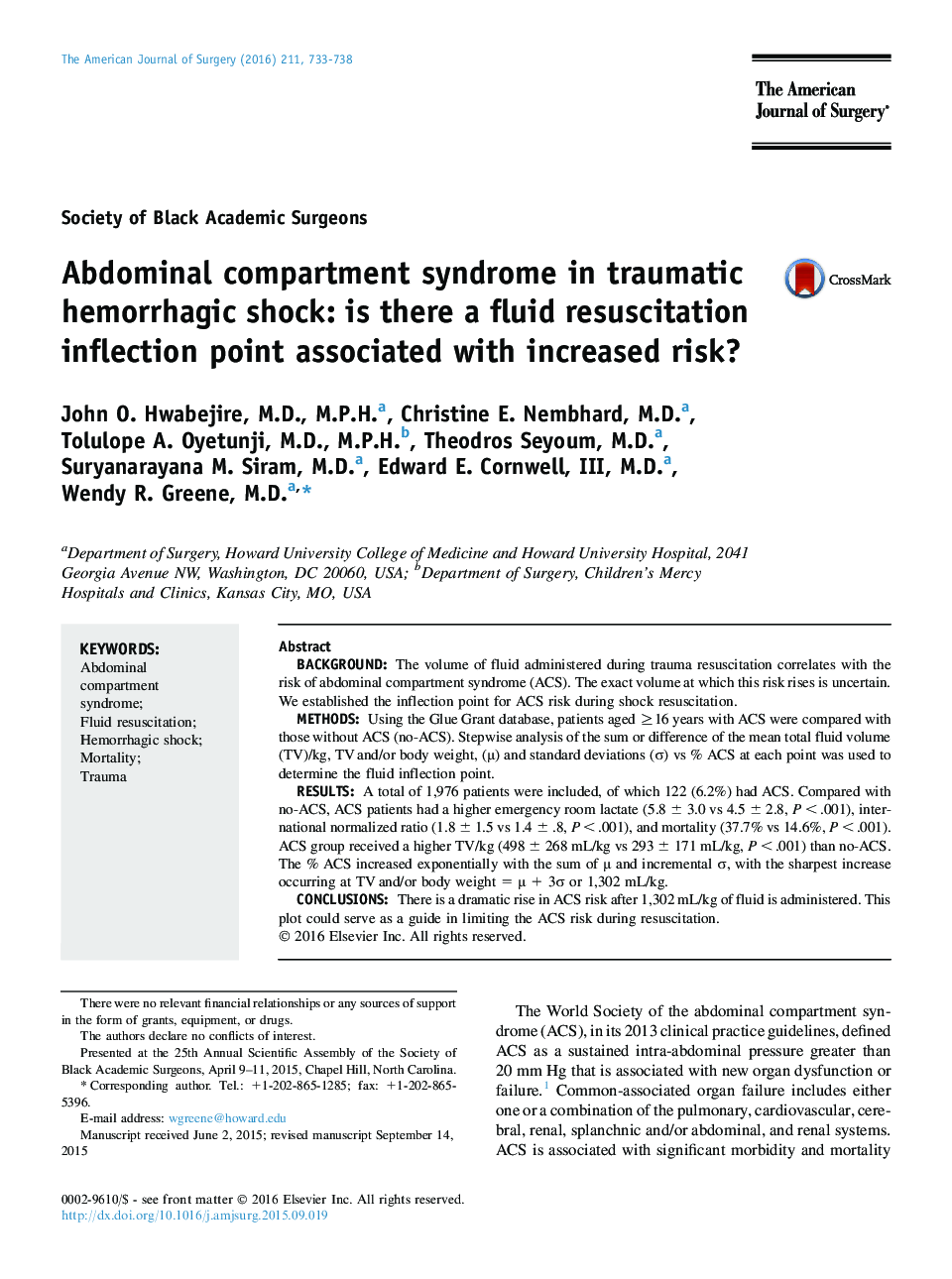| Article ID | Journal | Published Year | Pages | File Type |
|---|---|---|---|---|
| 6250362 | The American Journal of Surgery | 2016 | 6 Pages |
BackgroundThe volume of fluid administered during trauma resuscitation correlates with the risk of abdominal compartment syndrome (ACS). The exact volume at which this risk rises is uncertain. We established the inflection point for ACS risk during shock resuscitation.MethodsUsing the Glue Grant database, patients aged â¥16 years with ACS were compared with those without ACS (no-ACS). Stepwise analysis of the sum or difference of the mean total fluid volume (TV)/kg, TV and/or body weight, (μ) and standard deviations (Ï) vs % ACS at each point was used to determine the fluid inflection point.ResultsA total of 1,976 patients were included, of which 122 (6.2%) had ACS. Compared with no-ACS, ACS patients had a higher emergency room lactate (5.8 ± 3.0 vs 4.5 ± 2.8, P < .001), international normalized ratio (1.8 ± 1.5 vs 1.4 ± .8, P < .001), and mortality (37.7% vs 14.6%, P < .001). ACS group received a higher TV/kg (498 ± 268 mL/kg vs 293 ± 171 mL/kg, P < .001) than no-ACS. The % ACS increased exponentially with the sum of μ and incremental Ï, with the sharpest increase occurring at TV and/or body weight = μ + 3Ï or 1,302 mL/kg.ConclusionsThere is a dramatic rise in ACS risk after 1,302 mL/kg of fluid is administered. This plot could serve as a guide in limiting the ACS risk during resuscitation.
